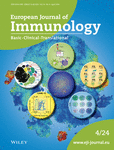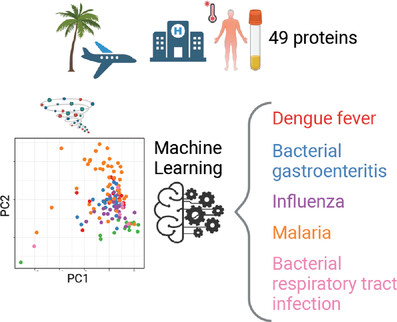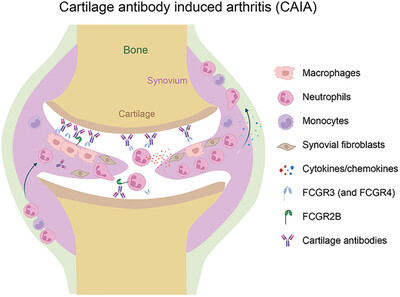Journal list menu
Export Citations
Download PDFs
Cover Picture
Cover Story: Eur. J. Immunol. 4'24
- First Published: 12 April 2024
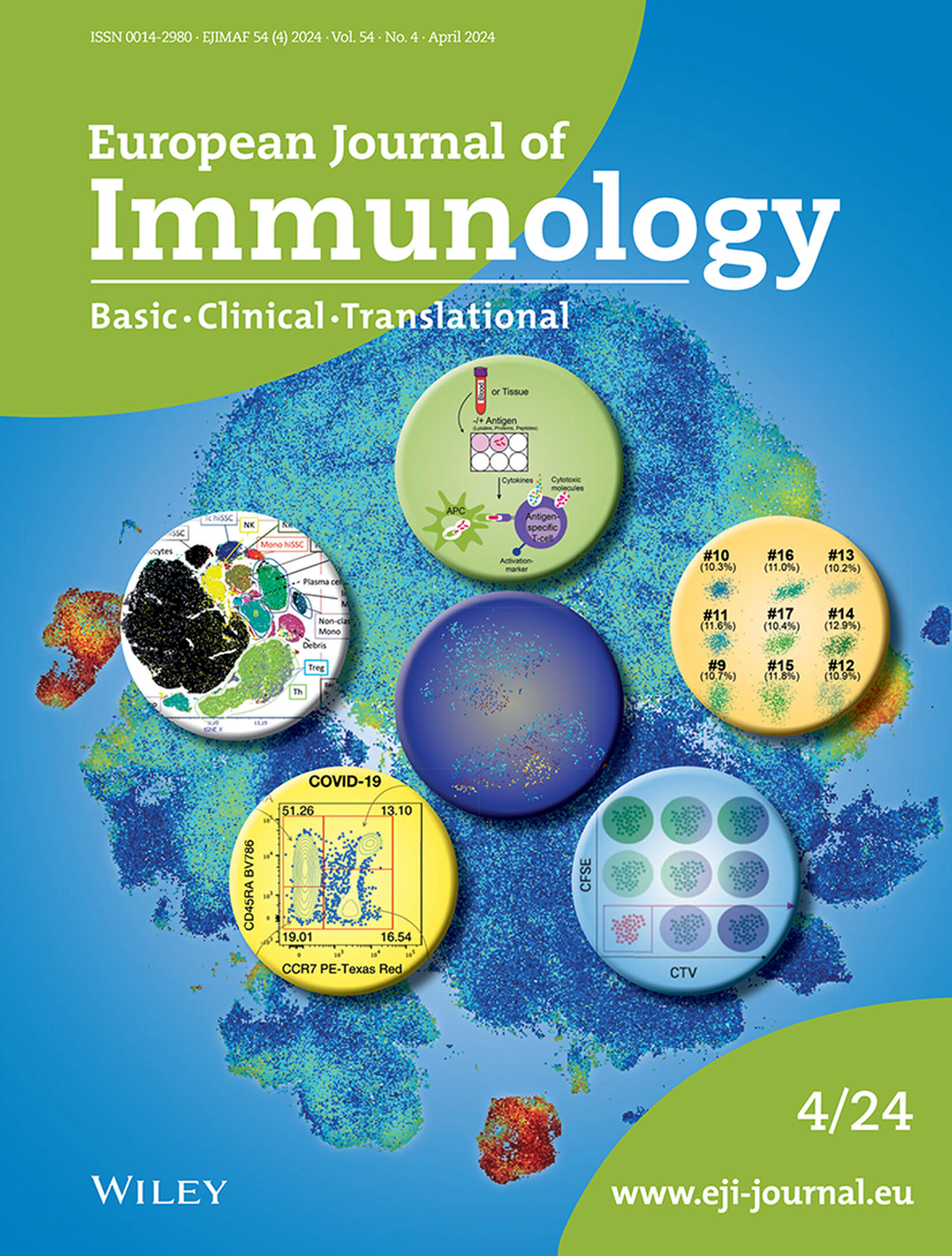
Our cover features images related to flow cytometry techniques widely used for analysis of function and phenotypes of major human and murine immune cell subsets, superimposed on a multidimensional immune cell population scatter plot. These images are taken from the third edition of EJI's Flow Cytometry Guidelines by Cossarizza et al., a comprehensive resource prepared by flow cytometry and immunology research experts from around the world.
Issue Information
Forum
News & EFIS
Highlights
Reviews
Basic
The IFN-γ-CXCL9/CXCL10-CXCR3 axis in vitiligo: Pathological mechanism and treatment
- First Published: 08 November 2023
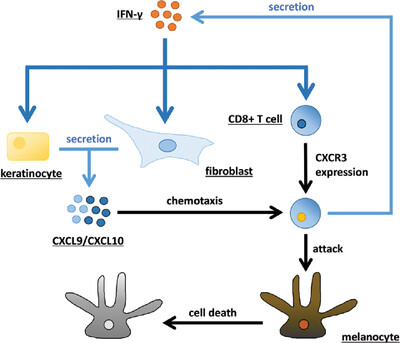
IFN-γ induces the secretion of CXCL9 and CXCL10 by skin cells, and the expression of CXCR3 on CD8+ T cells. CXCL9 and CXCL10 subsequently recruit CXCR3+ CD8+ T cells to attack melanocytes, induce cell death and ultimately cause vitiligo. Various immunological effects and therapeutic options are involved in this axis.
The “Domino effect” in MASLD: The inflammatory cascade of steatohepatitis
- First Published: 05 February 2024
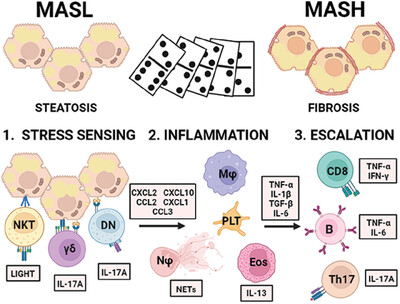
The transition of MASL to MASH occurs in three phases: (1) The detection of metabolic stress of hepatocytes by tissue-resident innate-like T cells. This triggers (2) the activation of myeloid cells and initiation of inflammation, followed by (3) escalation, meaning the recruitment and involvement of adaptive immune cells.
Regulation of autoimmune-mediated neuroinflammation by endothelial cells
- First Published: 09 February 2024
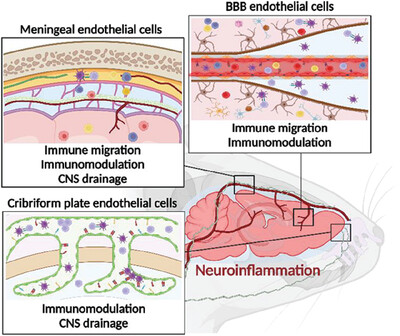
Immune cells are present in various CNS locations and contribute to neuroinflammation. The article reviews the role of endothelial cells on T-cell migration and functions, emphasizing the anatomical and molecular mechanisms involved in experimental autoimmune encephalomyelitis, and exploring the complex interplay between immune responses and CNS vasculature.
Immunity to infection
Research Article
Basic
Proteasome composition in immune cells implies special immune-cell-specific immunoproteasome function
- First Published: 08 March 2024

Immune cells from human peripheral blood and immune cells from murine spleen have been analyzed for their proteasome composition. All analyzed immune populations express almost solely immunoproteasome subunits and rather small proportions of standard proteasome subunits. This implicates a specialized role for the immunoproteasome in immune cells.
Highlights
Mini-Review
Basic
Nanoparticles for stimulation of neutrophil extracellular trap-mediated immunity
- First Published: 26 January 2024

Upon injection, inert nano-/microparticle vaccine adjuvants are phagocytosed by macrophages, causing lysosomal damage. This initiates cytokine-based signaling, leading to neutrophil recruitment and NETosis. Neutrophil extracellular traps entrap adjuvant particles, limiting inflammation. Co-injected specific antigens, including synthetic peptides, elicit a strong immune response.
Notes and Insights
Characterization of human CD4+EOMES+GzmK+ T-cell subsets unveils an uncoupling of suppressive functions from IL-10-producing capacities
- First Published: 23 February 2024
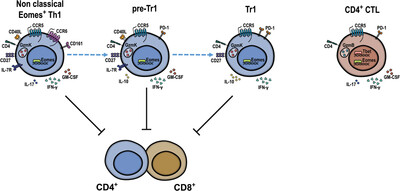
Human CD4+EOMES+ T cells are heterogeneous and contain Th1-cells, Tr1-cells, and CD4+CTL. Tr1- cells and non-classical EOMES+ Th1-cells displayed, respectively, anti- and pro-inflammatory cytokine profiles, but both expressed granzyme-K, produced IFN-γ, and suppressed T-cell proliferation. Diffusion map suggested a progressive CD4+T-cell differentiation from naïve to cytotoxic cells and identified EOMES+Th1-cells as putative Tr1-cell precursors (pre-Tr1).
Adaptive immunity
Research Article
Basic
Induction of a memory-like CD4+ T-cell phenotype by airway smooth muscle cells
- First Published: 09 February 2024
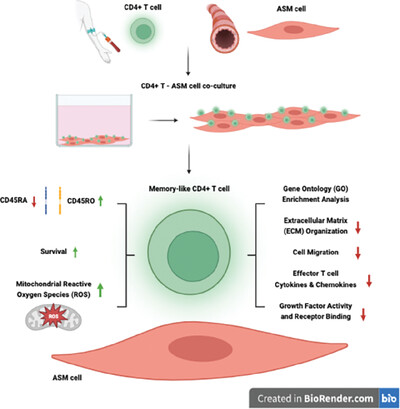
Co-cultures of CD4+ T cells and airway smooth muscle cells increased the proportion of CD45RA-CD45RO+ Memory T cells; however, mitochondrial respiration and cytokine responses were not augmented. Co-cultured CD4+ T cells downregulated various effector T-cell genes without an upregulation of memory genes. These results demonstrate airway smooth muscle cells can induce a memory-like phenotype in CD4+ T cells but are not sufficient to complete the transition to memory cells.
Molecular immunology and signaling
Research Articles
Basic
Frequency of natural regulatory T cells specific for factor VIII in the peripheral blood of healthy donors
- First Published: 01 March 2024
The activating receptor NKp65 is selectively expressed by human ILC3 and demarcates ILC3 from mature NK cells
- First Published: 10 December 2023
Systems immunology
Research Article
Basic
Disease-specific plasma protein profiles in patients with fever after traveling to tropical areas
- First Published: 03 February 2024
Allergy and inflammation
Research Articles
Basic
Interleukin-2-induced skin inflammation
- First Published: 02 March 2024
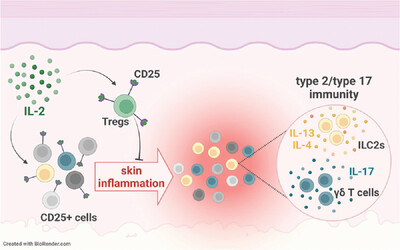
IL-2 immunotherapy induces skin inflammation characterized by a shift towards type 2/type 17 immunity by specific increases in group 2 innate lymphoid cells (ILC2s) and dermal γδ T cells. While CD25+ Tregs inhibit this process, inflammation at least in part is induced through CD25+ effector cells in the skin.
Composition of fatty acids in a high-fat diet affects adipose tissue inflammation by inducing calreticulin on adipocytes and activating group 1 innate lymphoid cells
- First Published: 28 January 2024
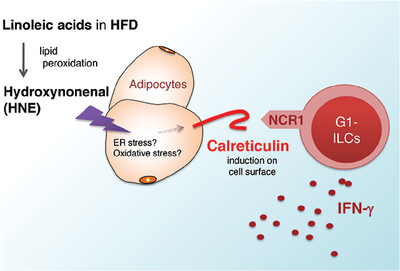
Calreticulin, a ligand for the NK activating receptor, is induced on the surface of adipocytes after exposure to 4-hydrocynonenal (HNE) or short feeding with linoleic acid-rich high-fat diet (HFD). Calreticulin on adipocytes activates G1-ILCs in fat tissue, induces IFN-gamma production and modifies adipose inflammation.
Immunodeficiencies and autoimmunity
Research Article
Basic
Fcgr2b and Fcgr3 are the major genetic factors for cartilage antibody-induced arthritis, overriding the effect of Hc encoding complement C5
- First Published: 05 February 2024
Tumor immunology
Research Article
Basic
Upregulation of IL4-induced gene 1 enzyme by B2 cells during melanoma progression impairs their antitumor properties
- First Published: 24 February 2024
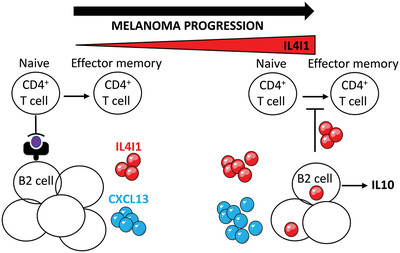
In advanced melanoma, upregulation of IL4I1 in B2 cells impairs their recruitment into tumors and thwarts their ability to generate effector memory T cells, contributing to a B-cell-induced immunosuppressive microenvironment. Accordingly, IL4I1 antagonists would reinforce current immunotherapy in the fight against melanoma progression.
Technical Report
Single-cell RNA sequencing of cells from fresh or frozen tissue reveals a signature of freezing marked by heightened stress and activation
- First Published: 02 February 2024
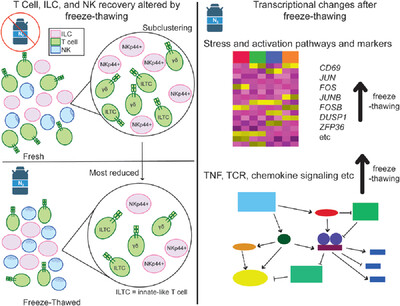
Thawing of viably frozen human tissue T cells, ILCs, and NK cells and subsequent single-cell RNA sequencing reveals that recovery of cellular subclusters is variably impacted. While freeze-thawing does not alter the transcriptional profiles of cells, it upregulates genes and gene pathways associated with stress and activation.




